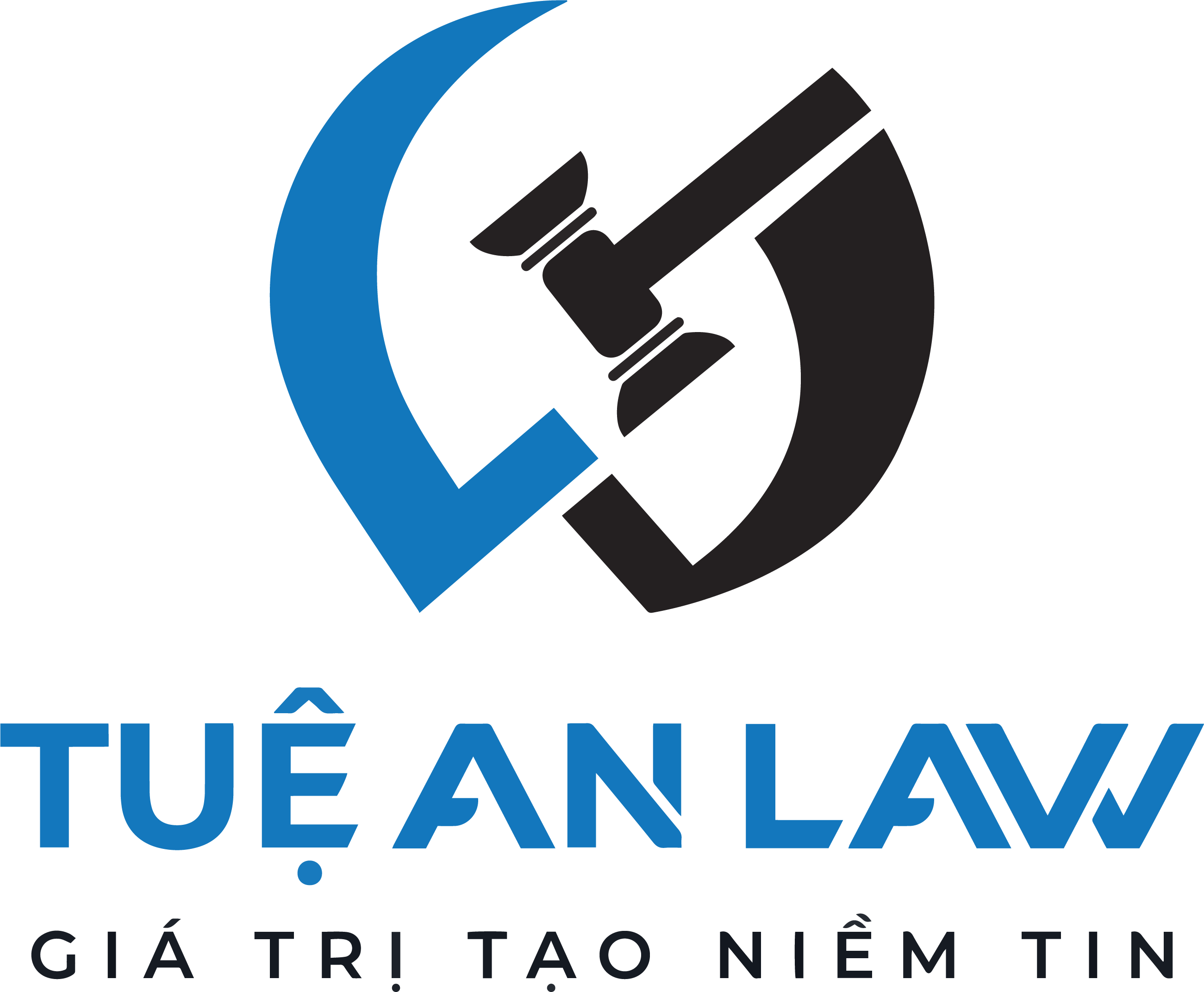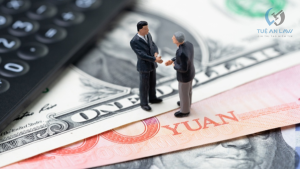Cơ chế bảo vệ quyền tác giả tại Việt Nam: Thực trạng, Thách thức và Giải pháp
Trong kỷ nguyên kinh tế tri thức, sáng tạo là động lực phát triển bền vững. Mỗi tác phẩm nghệ thuật, cuốn sách, phần mềm, hay sản phẩm truyền thông đều là kết tinh của trí tuệ con người. Vì thế, bảo vệ quyền tác giả không chỉ là bảo vệ lợi ích cá nhân của tác giả mà còn là bảo vệ giá trị sáng tạo, thúc đẩy đổi mới và hội nhập quốc tế.
Tại Việt Nam, cùng với quá trình hội nhập, đặc biệt sau khi gia nhập Công ước Berne (2004), tham gia WTO (2007) và ký kết các hiệp định thương mại tự do thế hệ mới như CPTPP hay EVFTA, hệ thống pháp luật về quyền tác giả đã được hoàn thiện đáng kể. Tuy nhiên, việc thực thi trên thực tế vẫn còn nhiều hạn chế, đặt ra yêu cầu phải nhìn nhận lại cơ chế bảo vệ quyền tác giả để đưa ra giải pháp phù hợp hơn.
1️⃣ Thực trạng xâm phạm quyền tác giả tại Việt Nam
Có thể thấy, các hành vi vi phạm bản quyền ở Việt Nam diễn ra tràn lan và đa dạng:
- Truyền hình, điện ảnh: phim chiếu rạp bị quay lén và đăng tải trên mạng chỉ sau vài giờ công chiếu.
- Âm nhạc: các bản thu âm, MV ca nhạc bị phát tán trái phép trên nhiều nền tảng trực tuyến.
- Xuất bản: sách in lậu tràn lan, đặc biệt là giáo trình và sách học ngoại ngữ.
- Phần mềm máy tính: tỉ lệ sử dụng phần mềm không bản quyền vẫn ở mức cao.
👉 Nguyên nhân chính:
- Ý thức tuân thủ pháp luật của một bộ phận xã hội còn hạn chế.
- Khó khăn trong phát hiện và xử lý vi phạm trên môi trường số.
- Mức xử phạt chưa đủ răn đe.
- Cơ chế thực thi còn phân tán, thiếu phối hợp.
2️⃣ Các cơ chế bảo vệ quyền tác giả ở Việt Nam
Việt Nam đang triển khai một cơ chế đa tầng để bảo vệ quyền tác giả, bao gồm:
🔹 Biện pháp hành chính
- Đặc điểm: thủ tục nhanh, chi phí thấp, do cơ quan hành chính (Thanh tra Văn hóa – Thể thao và Du lịch, Quản lý thị trường, Công an, UBND các cấp) xử lý.
- Hình thức xử phạt: phạt tiền, tịch thu tang vật, đình chỉ hoạt động, buộc tiêu hủy bản sao trái phép.
- Ưu điểm: hiệu quả tức thời, phù hợp với hành vi xâm phạm nhỏ lẻ.
- Hạn chế: không giải quyết triệt để vấn đề bồi thường thiệt hại; mức phạt còn thấp, chưa đủ răn đe.
🔹 Biện pháp dân sự
- Chủ thể quyền có thể khởi kiện yêu cầu bồi thường thiệt hại, buộc chấm dứt hành vi vi phạm.
- Đây là công cụ hữu hiệu để bảo vệ quyền lợi kinh tế của tác giả.
- Tuy nhiên: khó chứng minh thiệt hại thực tế, thủ tục tố tụng kéo dài, chi phí cao.
🔹 Biện pháp hình sự
- Cơ sở pháp lý: Điều 225 Bộ luật Hình sự 2015 (sửa đổi 2017).
- Tội xâm phạm quyền tác giả, quyền liên quan: có thể bị phạt tiền, phạt cải tạo không giam giữ hoặc phạt tù, ngoài ra pháp nhân thương mại cũng có thể bị xử lý hình sự.
- Ưu điểm: mức độ răn đe cao, xử lý hành vi nghiêm trọng, có tổ chức, gây thiệt hại lớn.
- Hạn chế: khó khởi tố, điều tra; số vụ án hình sự trong thực tiễn còn rất ít so với số lượng vi phạm..
🔹 Biện pháp công nghệ và tự bảo vệ
- Biện pháp công nghệ: áp dụng công nghệ chống sao chép, quản lý quyền kỹ thuật số (DRM), watermark, blockchain để xác thực quyền sở hữu.
- Tự bảo vệ: tác giả, nhà sản xuất, tổ chức quản lý tập thể quyền chủ động phát hiện, yêu cầu gỡ bỏ nội dung vi phạm, ký kết hợp đồng chặt chẽ để hạn chế rủi ro.
- Xu hướng mới: nhiều nền tảng số (YouTube, Facebook, Spotify) áp dụng cơ chế quản lý bản quyền kỹ thuật số nhằm hỗ trợ chủ thể quyền.
3️⃣ Những điểm sáng trong hệ thống bảo vệ
- Khung pháp lý đã tương đối đầy đủ và tương thích với chuẩn mực quốc tế.
- Việt Nam đã tham gia nhiều điều ước quốc tế, tạo cơ sở pháp lý cho việc bảo hộ xuyên biên giới.
- Các tổ chức quản lý tập thể quyền tác giả (như VCPMC trong âm nhạc) ngày càng phát huy vai trò trong thu phí và phân phối tiền bản quyền.
- Một số vụ việc vi phạm lớn đã bị xử lý, góp phần nâng cao nhận thức xã hội.
4️⃣ Những hạn chế, bất cập
Dù đã có nhiều tiến bộ, nhưng cơ chế bảo vệ quyền tác giả tại Việt Nam vẫn tồn tại nhiều “điểm nghẽn”:
- Thực thi chưa hiệu quả: số vụ kiện dân sự và xử lý hình sự quá ít so với thực tế vi phạm.
- Khó chứng minh thiệt hại: cơ chế bồi thường dân sự chưa rõ ràng, thường chỉ dừng ở mức tượng trưng.
- Mức phạt hành chính quá nhẹ: không đủ sức răn đe với các vi phạm mang tính thương mại lớn.
- Thiếu tòa án/chuyên trách sở hữu trí tuệ, dẫn đến thẩm phán phải xử nhiều loại vụ án, thiếu chuyên môn sâu.
- Nhận thức xã hội còn thấp: nhiều người vẫn cho rằng “dùng chung miễn phí” là chuyện bình thường.
5️⃣ Giải pháp đề xuất
Để nâng cao hiệu quả bảo vệ quyền tác giả, có thể xem xét các giải pháp sau:
1️⃣ Hoàn thiện pháp luật
- Quy định rõ ràng hơn về hành vi xâm phạm trong môi trường số.
- Tăng mức xử phạt hành chính, bổ sung cơ chế bồi thường mang tính răn đe.
2️⃣ Cải cách cơ chế thực thi
- Thành lập tòa án chuyên trách về sở hữu trí tuệ.
- Tăng cường đào tạo thẩm phán, điều tra viên, kiểm sát viên trong lĩnh vực này.
- Đẩy mạnh cơ chế phối hợp giữa các cơ quan quản lý, công an, tòa án.
3️⃣ Phát triển tổ chức quản lý tập thể quyền
- Nâng cao tính minh bạch, hiệu quả trong quản lý và phân phối tiền bản quyền.
- Mở rộng phạm vi quản lý, không chỉ trong âm nhạc mà cả trong điện ảnh, xuất bản, báo chí.
4️⃣ Ứng dụng công nghệ
- Khuyến khích tác giả sử dụng blockchain, watermark số, hệ thống nhận diện nội dung tự động (Content ID).
- Tăng cường hợp tác với các nền tảng trực tuyến quốc tế (YouTube, TikTok, Spotify).
5️⃣ Nâng cao nhận thức cộng đồng
- Đưa giáo dục về sở hữu trí tuệ vào nhà trường.
- Truyền thông xã hội về tác hại của vi phạm bản quyền.
- Khuyến khích tiêu dùng sản phẩm có bản quyền, tạo văn hóa tôn trọng quyền tác giả.
Kết luận
Quyền tác giả là hòn đá tảng của nền kinh tế sáng tạo. Một cơ chế bảo vệ hiệu quả không chỉ giúp tác giả yên tâm sáng tạo, mà còn tạo môi trường minh bạch, công bằng cho ngành công nghiệp văn hóa và công nghệ số phát triển.
Việt Nam đang đứng trước cơ hội lớn để hoàn thiện cơ chế này, thông qua việc cải cách pháp luật, tăng cường thực thi, ứng dụng công nghệ và nâng cao nhận thức xã hội. Đây sẽ là chìa khóa để đưa sáng tạo Việt Nam vươn tầm quốc tế.
Trên đây là tư vấn của Tuệ An LAW về: “Cơ chế bảo hộ quyền tác giả tại Việt Nam” theo quy định của pháp luật mới nhất. Nếu còn vướng mắc, chưa rõ hoặc cần hỗ trợ pháp lý khác, vui lòng liên hệ ngay Luật sư để được tư vấn miễn phí. Luật sư chuyên nghiệp, tư vấn miễn phí – 098.421.0550
Tuệ An Law cung cấp thông tin về giá dịch vụ như sau:
Luật sư tư vấn online qua điện thoại: Miễn phí tư vấn.
Dịch vụ luật sư tư vấn trực tiếp tại văn phòng: Từ 500.000 đồng/giờ tư vấn của Luật sư chính. Dịch vụ Luật sư thực hiện soạn thảo giấy tờ pháp lý như lập đơn khởi kiện, thu thập chứng cứ,…
Nhận đại diện theo uỷ quyền làm việc với cơ quan nhà nước có thẩm quyền;
Cử Luật sư thực hiện các thủ tục pháp lý tại Toà án; Tham gia bào chữa tại Tòa án;
Các dịch vụ pháp lý liên quan khác.
Phí dịch vụ tư vấn, thực hiện các thủ tục pháp lý sẽ được điều chỉnh tuỳ vào từng việc cụ thể.
Liên hệ ngay đến số điện thoại 098.421.0550 để được Luật sư chuyên môn tư vấn pháp luật miễn phí. Theo các phương thức sau:
Điện thoại (Zalo/Viber): 098.421.0550
Website: http://tueanlaw.com
Email: [email protected]; [email protected]

Mechanisms for Protecting Copyright in Vietnam: Current Situation, Challenges, and Solutions
In the era of the knowledge economy, creativity is the driver of sustainable development. Every artistic work, book, software, or media product is the crystallization of human intellect. Therefore, protecting copyright is not only about safeguarding the personal interests of authors but also about preserving creative value, fostering innovation, and promoting international integration.
In Vietnam, along with the process of integration—especially after joining the Berne Convention (2004), the WTO (2007), and signing new-generation trade agreements such as CPTPP and EVFTA—the legal system on copyright has been significantly improved. However, practical enforcement remains limited, raising the need to re-examine the mechanisms of copyright protection and propose more appropriate solutions.
1️⃣ Current Situation of Copyright Infringement in Vietnam
Copyright violations in Vietnam are widespread and diverse:
- Television and cinema: movies screened in theaters are illegally recorded and uploaded online within hours of release.
- Music: recordings and music videos are distributed without authorization across multiple digital platforms.
- Publishing: pirated books are rampant, particularly textbooks and foreign language learning materials.
- Computer software: the rate of unlicensed software use remains high.
👉 Key causes include:
- Low awareness of legal compliance among segments of society.
- Difficulties in detecting and addressing violations in the digital environment.
- Penalties are not sufficiently deterrent.
- Fragmented enforcement mechanisms and weak coordination among authorities.
2️⃣ Mechanisms for Copyright Protection in Vietnam
Vietnam currently applies a multi-layered protection system, including:
🔹 Administrative measures
- Characteristics: fast procedures, low costs, handled by administrative agencies (Inspectorates of Culture, Sports and Tourism, Market Surveillance, Police, People’s Committees).
- Sanctions: fines, confiscation of infringing goods, suspension of activities, destruction of counterfeit copies.
- Advantages: immediate effectiveness, suitable for small-scale infringements.
- Limitations: does not address compensation for damages; fines remain low and lack deterrence.
🔹 Civil measures
- Copyright owners can initiate lawsuits demanding compensation and cessation of infringing acts.
- Strength: useful tool to safeguard authors’ economic interests.
- Weaknesses: difficult to prove actual damages, lengthy litigation, and high costs.
🔹 Criminal measures
- Legal basis: Article 225 of the 2015 Penal Code (amended 2017).
- Sanctions: fines, non-custodial reform, imprisonment; corporate entities may also face criminal liability.
- Advantages: strong deterrent effect, applied to serious, organized, large-scale infringements.
- Limitations: challenging to prosecute and investigate; very few criminal cases are handled compared to actual infringements.
🔹 Technological measures and self-protection
- Technological measures: anti-copying tools, digital rights management (DRM), watermarks, blockchain for ownership verification.
- Self-protection: authors, producers, and collective management organizations actively detect infringements, request takedowns, and draft strict contracts.
- Emerging trend: digital platforms (YouTube, Facebook, Spotify) implement digital copyright management mechanisms to support rights holders.
3️⃣ Positive Aspects of the Protection System
- The legal framework is relatively complete and aligned with international standards.
- Vietnam has acceded to numerous international treaties, creating a foundation for cross-border protection.
- Collective management organizations (e.g., VCPMC in the music industry) increasingly play a role in collecting and distributing royalties.
- Several major infringement cases have been sanctioned, contributing to raising public awareness.
4️⃣ Limitations and Shortcomings
Despite progress, copyright protection in Vietnam still faces many bottlenecks:
- Ineffective enforcement: civil lawsuits and criminal cases remain rare compared to the scale of violations.
- Difficulty proving damages: compensation mechanisms are unclear and often symbolic.
- Administrative fines too low: not a sufficient deterrent for large-scale commercial infringements.
- Lack of specialized IP courts: judges handle diverse cases and lack deep expertise.
- Low public awareness: many still perceive “free sharing” as acceptable.
5️⃣ Proposed Solutions
1️⃣ Legal reform
- Provide clearer regulations on online infringements.
- Increase administrative fines and introduce punitive damages to strengthen deterrence.
2️⃣ Enforcement reform
- Establish specialized Intellectual Property Courts.
- Train judges, investigators, and prosecutors in IP law.
- Enhance coordination among government agencies, police, and courts.
3️⃣ Strengthening collective management organizations
- Improve transparency and efficiency in royalty collection and distribution.
- Expand coverage beyond music to film, publishing, and journalism.
4️⃣ Technology application
- Encourage authors to adopt blockchain, digital watermarks, and automated content recognition (e.g., Content ID).
- Strengthen cooperation with international platforms (YouTube, TikTok, Spotify).
5️⃣ Raising public awareness
- Integrate intellectual property education into school curricula.
- Public communication campaigns on the harms of copyright infringement.
- Promote legal consumption of copyrighted products, building a culture of copyright respect.
Conclusion
Copyright is the cornerstone of the creative economy. An effective protection mechanism not only provides authors with confidence to create but also fosters a transparent and fair environment for the cultural and digital industries to thrive.
Vietnam is at a crucial juncture to improve its protection system through legal reform, stronger enforcement, technological innovation, and public awareness campaigns. These steps will be the key to elevating Vietnamese creativity to the international stage.
Tuệ An Law – Legal Advisory Services
This article is provided by Tuệ An Law: “Copyright Protection Mechanisms in Vietnam” under the latest legal regulations. If you have any concerns or require further legal assistance, please contact our lawyers for free consultation.
Our services include:
- Online legal consultation by phone: Free of charge.
- Direct consultation at our office: from 500,000 VND/hour with senior lawyers.
- Drafting legal documents such as complaints, petitions, evidence collection.
- Legal representation before state authorities.
- Litigation representation before the courts.
- Other copyright-related legal services.
👉 Service fees may vary depending on specific cases.
📞 Contact Tuệ An Law for professional support:
- Phone/Zalo/Viber: 421.0550
- Website: http://tueanlaw.com
- Email: [email protected] | [email protected]


